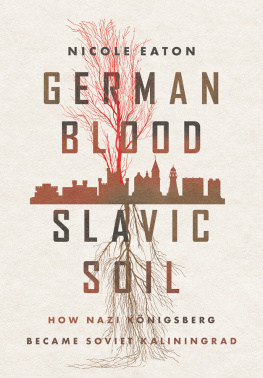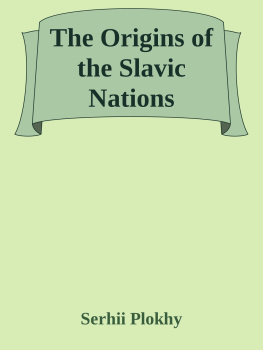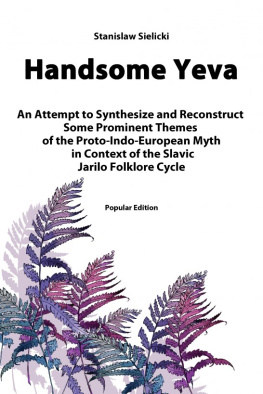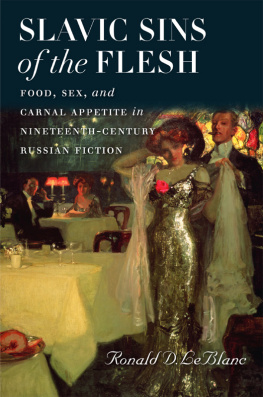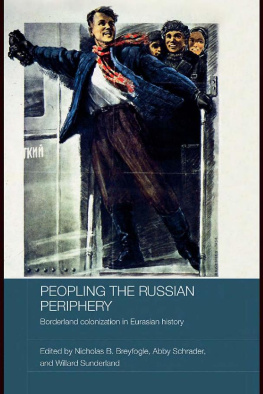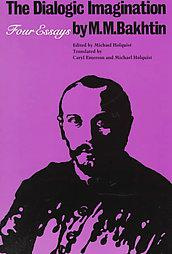
Slavic Gods and Heroes
This book offers a radical reinterpretation of the Slavic pagan religion made on the basis of a thorough re-examination of all reliable sources. What did Slavic pagan religion have in common with the Afro-American cult of voodoo? Why were no Slavic gods mentioned before the mid-tenth century, and why were there no Slavic gods at all between the Dnieper and the Order? Why were Slavic foundation legends similar to the totemic myths of the nomadic peoples of the Eurasian Steppe, and who were Slavic Remus and Romulus? What were the Indo-European roots of Slavic hippomantic rituals, and where was the Eastern Slavic dragon Zmey Gorynych born? Answers to these and many other provocative questions can be found in this book.
Judith Kalik teaches East European history at the Hebrew University of Jerusalem. She has written extensively on the inter-religious encounters in Eastern Europe from the early Middle Ages to the early twentieth century.
Alexander Uchitel taught ancient history at the Hebrew University of Jerusalem and the University of Haifa between 1985 and 2017. He is the author of numerous articles on diverse subjects related to the history and philology of ancient Greece and the ancient Near East.
Slavic Gods and Heroes
Judith Kalik and Alexander Uchitel

First published 2019
by Routledge
2 Park Square, Milton Park, Abingdon, Oxon OX14 4RN
and by Routledge
711 Third Avenue, New York, NY 10017
Routledge is an imprint of the Taylor & Francis Group, an informa business
2019 Judith Kalik and Alexander Uchitel
The right of Judith Kalik and Alexander Uchitel to be identified as authors of this work has been asserted by them in accordance with sections 77 and 78 of the Copyright, Designs and Patents Act 1988.
All rights reserved. No part of this book may be reprinted or reproduced or utilised in any form or by any electronic, mechanical, or other means, now known or hereafter invented, including photocopying and recording, or in any information storage or retrieval system, without permission in writing from the publishers.
Trademark notice : Product or corporate names may be trademarks or registered trademarks, and are used only for identification and explanation without intent to infringe.
British Library Cataloguing in Publication Data
A catalogue record for this book is available from the British Library
Library of Congress Cataloging in Publication Data
Names: Kalik, Judith, author.
Title: Slavic gods and heroes / Judith Kalik and Alexander Uchitel.
Description: 1 [edition]. | New York : Routledge, 2018. | Includes bibliographical references and index.
Identifiers: LCCN 2018009437| ISBN 9781138493193 (hardback : alk. paper) | ISBN 9781351028707 (e-book)
Subjects: LCSH: Mythology, Slavic. | Gods, Slavic. | SlavsReligion.
Classification: LCC BL930 .K287 2018 | DDC 299/.18dc23
LC record available at https://lccn.loc.gov/2018009437
ISBN: 978-1-138-49319-3 (hbk)
ISBN: 978-1-351-02870-7 (ebk)
Typeset in Times New Roman
by Swales & Willis Ltd, Exeter, Devon, UK
Interest in pre-Christian pagan religion and mythology swept over Europe in three waves. The first was an integral part of the Romantic movement of the first half of the nineteenth century generally, and of the 1848 Spring of Nations particularly. This event signaled a national awakening and the formation of national identities in Eastern Europe. The second wave rose in the mid-twentieth century and was connected to German Nazi ideology and its imitations in other countries. This ideology perceived Christianity as a Jewish influence, corruptive to the spirit of Aryan nations. The third and final wave came in the early twenty-first century. It originated in the anti-globalist movement, which has spread throughout Europe and is especially active in Russia, where Christianity is often portrayed as a European influence, foreign to the original Eurasian Russian civilization.
This work was neither inspired by the neopagan movement nor a reaction to its revival. Rather, it originated in a seminar course that Judith Kalik taught at the Hebrew University of Jerusalem during the 2011/12 academic year. Alexander Uchitel participated in this seminar as a guest lecturer.
A re-examination of the sources led to surprising conclusions, which are both destructive and constructive. We deconstruct the Slavic pagan pantheon, presenting Slavic gods as late and artificial constructions, heavily influenced by the Christian cultic figures. We also reconstruct the most ancient Slavic totemic myth on the basis of the foundation legends of various Slavic tribes.
In the course of our work, Judith Kalik was mainly responsible for the medieval Latin chronicles, while Alexander Uchitel was mainly responsible for the Greek, Scandinavian, Iranian, and Arabic sources, and all worldwide comparative materials. He also wrote an introductory chapter on ancient Slavs and their neighbors, , and proposed all etymologies. The treatment of the Slavic sources, as well as the conclusions about the nature of Slavic gods and heroes, are the results of our joint fruitful discussions.
The authors would like to thank our friend Tamar Duke-Cohan for her assistance in improving our English throughout the manuscript.
Slavic mythology does not exist. There is nothing comparable to the Icelandic Eddas, oral epic poetry glorifies the exploits of Christian heroes fighting infidels. We know nothing about either the family relationships of Slavic gods or about conflicts between them. Neither Slavic creation myths nor stories about the Slavic netherworld have survived. The contrast with other European cultures is striking and frustrating to those who harbor Slavic national feelings. Highly developed and complicated Germanic, Celtic, and Finnish pagan mythologies are well known and have served as inspiration for numerous artists, writers, and poets, beginning with the age of national awakening in the mid-nineteenth century. This situationembarrassing for Slavsproved fertile ground from which sprouted numerous forgeries of Slavic mythological compositions between the nineteenth and twenty-first centuries.
The first such forgery was the so-called Slavic glosses, which Czech scholar Vclav Hanka added in 1827 to the thirteenth-century Latin encyclopedic dictionary Mater Verborum . Later forgeries were more blatant and crude.
The next forgery was the Veda Slovena ( ), which the Bosnian Croat Stefan Verkovi published in 1874 in Belgrade. The book was presented as a collection of pagan myths that Bulgarian teacher Ivan Gologanov recorded in Thrace and Macedonia among Muslim Bulgarians (the so-called pomaks ). Gologanov was most probably the real author of the text, which contained a strange mixture of Greek (Orpheus, Atlas), Indian (Vishnu, Shiva), Iranian (Yima), and Slavic (Ogne-bog) gods and heroes. Veda Slovena gained fame in the newly independent Bulgaria (since 1878), and Indian (Aryan) Vedic connections became a constant feature of later pseudo-Slavic forgeries.
The most famous and influential forgery was the twentieth-century Book of Veles ( ). The cover story of its discovery sounds like a thriller. Alexander Kurenkov first published the Book of Veles in 1957 in San Francisco in the Russian-language magazine Zhar-Ptitsa ( Firebird ). Kurenkov received the manuscript from Yury Miroliubov, who immigrated to the United States from Brussels in 1953. Miroliubov claimed that during the Russian Civil War, a White Russian Army officer, Fedor Izenbek, found several inscribed wooden planks in the looted house of Prince Zadonski (there is no such princely family in Russia) near Kharkov. He is said to have shown these planks to Miroliubov in 1925 in Brussels. During the German occupation of Belgium, Izenbek died and the planks were lost. Miroliubov produced a photograph of only one such plank; in fact, a photocopy of the paper copy, not of the wooden plank itself. He claimed to have transcribed the text of the other planks. The text on the photocopy is written in Cyrillic characters connected from above by horizontal lines, like the modern Indian script Devanagari. The Book of Veles is written in a mixture of several modern Slavic languages, which are supposed to represent a proto-Slavic language. The book begins with a hymn in praise of the Pomeranian god Triglav (Three-Headed), who is presented as one god in three personas: Svarog, Perun, and Sventovit. Numerous other Slavic and Indian (Indra, Surya) gods are mentioned as well. Furthermore, the text tells a fantastic story about the migrations of the tribes of Rusichi (the supposed ancient name of Russians) during the tenth century bce (!). Miroliubov likely wrote the Book of Veles himself in the early 1950s in San Francisco. Even though all serious scholars agree that the Book of Veles is a forgery,
Next page

